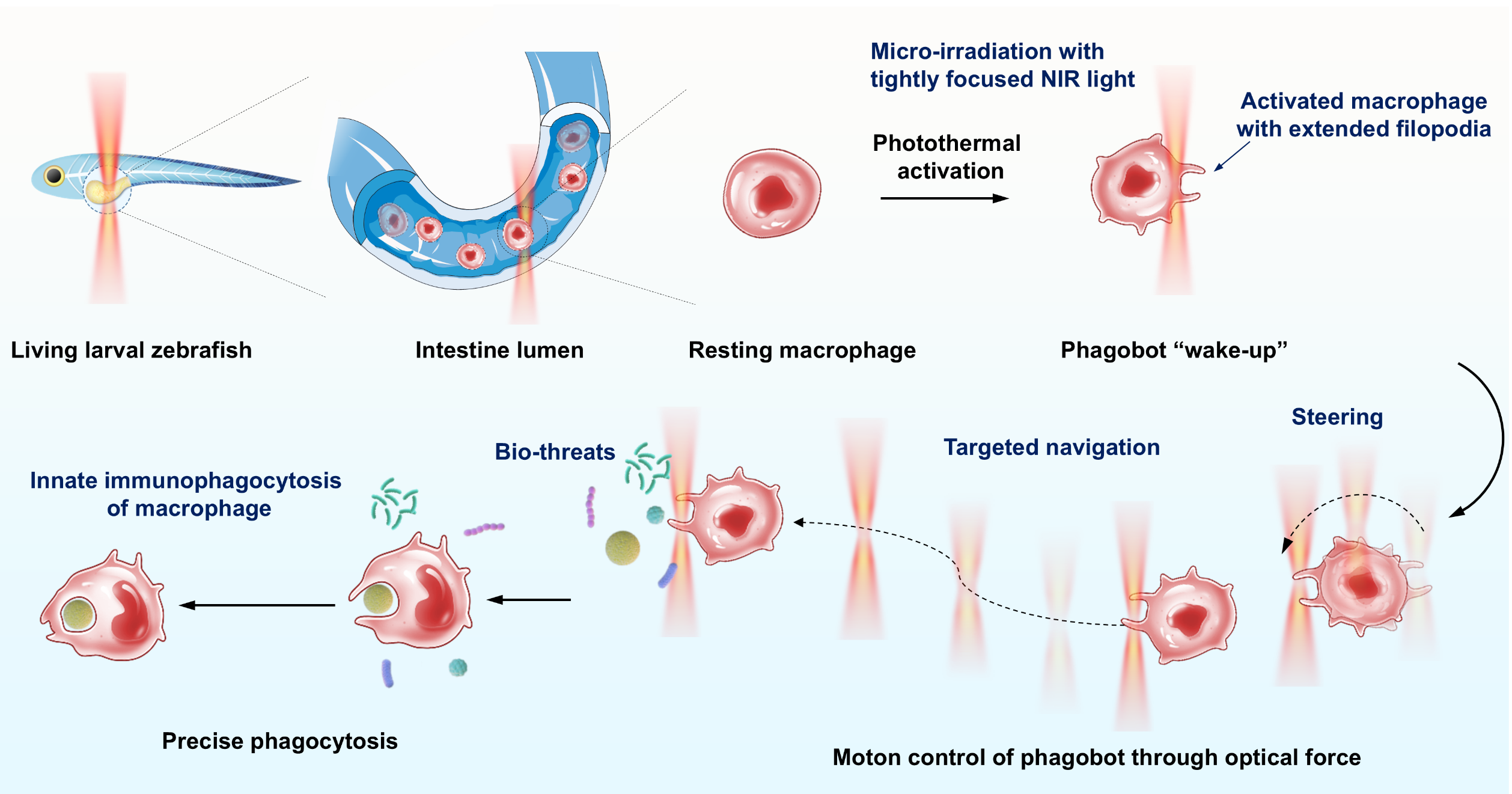Xing's first authored paper 《Light-powered phagocytic macrophage microrobot (phagobot): both in vitro and in vivo》was published in Light: Science & Applications. Good job! Congratulations! This work was also reported by Science Magazine, Science Blog and Bioengineer.org.
Xing Li, Shuhan Zhong, Ting Pan*, Jianyun Xiong, Guoshuai Zhu, Yang Shi, and Hongbao Xin*
Abstract
Micro/nanorobots based on immune cells show great potential for addressing challenging biological and biomedical conditions. However, their powerful innate immune functions, particularly the phagocytosis capabilities, remain a big challenge to fully leverage with the current designs of immune cell-based microrobots. Herein, we report a light-powered phagocytic macrophage microrobot (phagobot), which is capable of robotic navigation towards specific foreign bio-threats and executing precise phagocytosis of these targeted entities under light control. Without genetic modification or nanoengineering of macrophages, the phagobot’s “wake-up” program is achieved through direct activation of a resting-state macrophage by a tightly focused near infrared (NIR) light beam. The phagobot exhibits robotic steering and directional navigation controlled by optical manipulation of the extended pseudopodia within the activated macrophage. It can further execute targeted phagocytic clearance tasks via engulfing virous foreign bio-threats, including nanoplastics, microbials and cancer cell debris. Notably, the phagobot can be constructed in a living larval zebrafish through optical activation and manipulation of the endogenous macrophage, which also exhibits controllable navigation and targeted phagocytic capabilities in vivo. With the intrinsic immune functions of macrophages, our light-powered phagobot represents a novel form of intelligent immune cell-based microrobots, holding many new possibilities for precise immune regulation and treatment for immune-related diseases.
